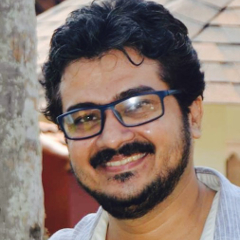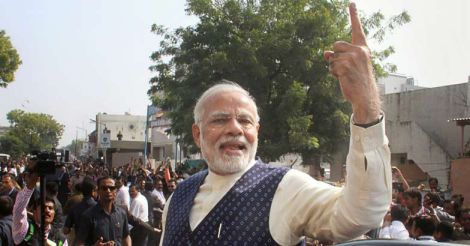Prime minister Narendra Modi has a Congress leader to thank for his push for simultaneous elections to the states and the Center. Sudarsana Natchiyappan, the Rajya Sabha member from Tamil Nadu who drew flak for the flop show of Congress’ organizational election in Kerala under his watch, presided over the parliamentary standing committee that put forth the recommendation for simultaneous polls.
The idea has taken definite form with president Ram Nath Kovind endorsing it. Simultaneous polls was nobody’s baby when the National Law Commission mooted it in 1999. No one vouched for it, except BJP leader L K Advani 10 years later.
Modi, however, saw this as an opportunity to extend his rule. As soon as he came to power at the Center in May 2014, he nudged the parliamentary committee to submit its report on the proposed reform.
The committee included two members owing allegiance to the CPM. Party member A Sampath and party-backed independent Joyce George, who replaced Innocent in the committee. It was not clear if they raised their dissent in the committee but a majority of members opined that the report was well-balanced, according to the minutes of the final meeting of the committee on December 15, 2015.
The CPM was conspicuously absent from the list of parties which wrote to the panel to record their opinion even though it emerged as a fierce critic of the proposal later.
The CPI, in contrast, has gone on record with its dissent. While the Congress said that the proposal threatened to throw Indian democracy off balance, ally Muslim League favored simultaneous polls.
Making monolith
Modi has tactfully integrated the Center and the states financially by the introduction of the Goods and Services Act. He may now be aiming for the political consolidation with simultaneous polls.
A study of the general elections and state elections held simultaneously between 1999 and 2014 has shown that 77 percent of voters tended to favor the same party for both the Center and the state.
With 19 states under its control, the BJP expects to cash in on the trend even though the official rationale is to control the mounting expenditure and the administrative paralysis due to frequent elections.
At the same time, simultaneous elections may be depriving voters of a crucial weapon to humble the ruling dispensation. Every by-election assumes significance across India because they are treated as a litmus test for the popularity of the government. People’s representatives and their parties would have a free run if they know they will be unchallenged for the next five years at least.
The Kerala experience
Kerala threw simultaneous polls out of sync, albeit unwittingly. The state had gone to poll along with the rest of India in the initial two general elections in 1952 and 1957. After the Congress government at the Center dismissed the E M S Namboodiripad government in 1959, mid-term polls were necessitated in 1960.
The trend became national when Indira Gandhi dismissed the Lok Sabha in December 1970. That decision was a precedent for the Nayanar government to call for premature election to the Kerala assembly in 1991 along with the rest of India.
Thus Modi’s national election calendar is a rollback of the states’ authority to decide the timing of its elections.
Ten states are scheduled to go to polls this year. Five states are expected to go to polls next year and five more in 2020. If the election schedules of all these states are tweaked to coincide with the general election in 2019, that would sync every state except nine, including Kerala where the assembly completes its term only in 2021.
Syncing Kerala would be a thorn in the flesh for the BJP. It has to either allow the hostile Left Democratic Front government to continue until the next general election in 2024 or cut short its term.
The BJP has to find answers to many such practical and unsettling questions, unless its aim is only to sow confusion among opposition camps.
Read more: Latest national news | Columns

























 Modi sees the proposal for simultaneous polls as an opportunity to extend his rule.
Modi sees the proposal for simultaneous polls as an opportunity to extend his rule.